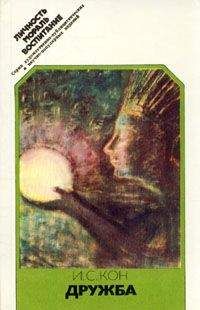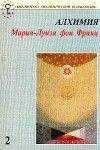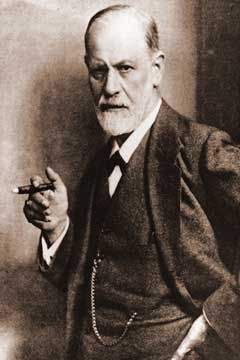Эллиот Аронсон - Общественное животное. Введение в социальную психологию
Скачивание начинается... Если скачивание не началось автоматически, пожалуйста нажмите на эту ссылку.
Жалоба
Напишите нам, и мы в срочном порядке примем меры.
Описание книги "Общественное животное. Введение в социальную психологию"
Описание и краткое содержание "Общественное животное. Введение в социальную психологию" читать бесплатно онлайн.
71. Greenwald, The totalitarian ego.
72. Jervis, R. (1976). Perception and misperception in international politics. Princeton, NJ: Princeton University.
73. Longer, E.J. (1975). The illusion of control. Journal of Personality and Social Psychology, 32, 311-329. Longer, E.J. (1977). The psychology of chance. Journal of the Theory of Social Behavior, 7, 185-208.
74. Petty, R.E., amp; Brock, T.C. (1979). Effects of‹Bamum› personality assessments on cognitive behavior. Journal of Consulting and Clinical Psychology, 47, 201-203.
75. Markus, Н. (1977). Self-schemata and processing information about the self. Journal of Personality and Social Psychology, 35, 63-78. Breckler, S.J., Pratkanis, A.R., amp; McCann, D. (1991). The representation of self in multidimensional cognitive space. British Journal of Social Psychology, 30, 97-112. Brenner, M. (1973). The next-in-line effect. Journal of Verbal Learning and Verbal Behavior, 12, 320-323. Slamecka, N.J., amp; Graf, P. (1978). The generation effect: Delineation of a phenomenon. Journal of Experimental Psychology: Human Learning and Memory,4, 592-604. Rogers, Т. B.,Kuiper, N.A., amp; Kirker, W.S. (1977). Self-reference and the encoding of personal information. Journal of Personality and Social Psychology, 35, 677-688. Klein, S.B., amp; Loftus, J. (1988). The nature ofself-referent encoding: The contributions ofelaborative and organizational processes. Journal of Personality and Social Psychology, 55, 5-11.
76. San Francisco Sunday Examiner and Chronicle, April 22, 1979, p. 35.
77. Greenberg, J., Pysy^ynski, Т., amp; Solomon, S. (1982). The self-serving attributional bias: Beyond self-presentation. Journal of Experimental Social Psychology, 18, 56-67. Arkin, P.M., amp; Maruyama, G.M. (1979). Attribution, affect, and college exam performance. Journal of Educational Psychology, 71, 85-93. Gilovich, Т. (1983). Biased evaluation and persistence in gambling. Journal of Personality and Social Psychology, ^,1110-1126. Ross, M., amp; Sicoly, F. (1979). Egocentric biases in availability and attribution. Journal of Personality and Social Psychology, 37, 322-336. Breckler, S.J., Pratkanis, A.R., amp; McCann, D. (1991). The representation of self in multidimensional cognitive space. British Journal of Social Psychology, 30, 97-112. Johnston, W.A. (1967). Individual performance and self-evaluation in a simulated team. Organizational Behavior and Human Performance, 2, 309-328. Cunningham, J.D., Starr, P.A., amp; Kanouse, D.E. (1979). Self as actor, active observer, and passive observer: Implications for causal attribution. Journal of Personality and Social Psychology, 37, 1146-1152.
78. Greenwald, A.G., amp; Bleckler, S.J. (1985). To whom is the self presented? In B.R. Schlenker (Ed.), The self and social life (pp. 126-145). New York: McGraw-Hill.
79. Miller, D.T., amp; Ross, M. (1975). Self-serving biases in the attribution of causality: Fact or fiction? Psychological Bulletin, 82, 213-225.
80. Weary (Bradley), G. (1978). Self-serving biases in the attribution process: A reexamination of the fact or fiction question. Journal of Personality and Social Psychology, 36, 56-71. Weary, G. (1980). Examination of affect and egotism as mediators of bias in causal attribution. Journal of Personality and Social Psychology, 38, 348-357. Weary, G" Harvey, J.H., Schwieger, P., Olson, C.T., Perloff, R., amp; Pritchard, S. (1982). Self-presentation and the moderation of self-serving attributional biases. Social Cognition, 1,140-159.
81. Alloy, L.B., amp; Abramson, L.Y. (1979). Judgement of contingency in depressed and nondepressed students: Sadder but wiser. Journal of Experimental Psychology: General, 108,441-485.
82. Grove, J.R., Hanrahan, S.J., amp; Mcinman, A. (1991). Success/failure bias in attribution across involvement categories in sport. Personality and Social Psychology Bulletin, 17,93-97.
83. Taylor, S.E. (1989). Positive illusions: Creative self-deception and the healthy mind. New York: Basic Books.
84. Seligman, M.E.P. (1991). Learned optimism. New York: Knopf. Рус. пер. - Зелигман M. Как научиться оптимизму. Советы на каждый день. M., 1997.
К главе 5 Самооправдание
1. Prasad, J. (1950). A comparative study of rumors and reports in earthquakes. British Journal of Psychology, 41, 129-144.
2. Sinha, D. (1952). Behavior in a catastrophic situation: A psychological study of reports and rumors. British Journal of Psychology, 43, 200-209.
3. Festinger, L. (1957). A theory of cognitive dissonance. Stanford: Stanford University Press.
4. Kassarjian, H., amp; Cohen, J. (1965). Cognitive dissonance and consumer behavior. California Management Review, 8, 55-64.
5. Tagliaco^o, R. (1979). Smokers' self-categorization and the reduction of cognitive dissonance. Addictive Behaviors, 4, 393-399.
6. Goleman, D. (1982, January). Make-or-break resolutions. Psychology Today, p. 19.
7. Austin American, November 18, 1971, p. 69.
8. Hastorf, A., amp; Cantril, H. (1954). They saw a game: A case study. Journal of Abnormal and Social Psychology, 49, 129-134.
9. Bruce, L. (1966). How to talk dirty and influence people (pp. 232-233). Chicago: Playboy Press, and New York: Pocket Books.
10. Time, November 24, 1980, p. II.
11. Jones, E., amp; Kohler, R. (1959). The effects of plausibility on the learning of controversial statements. Journal of Abnormal and Social Psychology, 57, 315-320.
12. Lord, С., Ross, L., amp; Lepper, M. (1979). Biased assimilation and attitude polarization: The effects of prior theories on subseqently considered evidence. Journal of Personality and Social Psychology, 37, 2098-2109.
13. Ehrlich, D., Guttman, 1., Schonbach, P., amp; Mills, J. (1957). Postdecision exposure to relevant information. Journal of Abnormal and Social Psychology, 57, 98-102.
14. Brehm, J. (1956). Postdecision changes in the desirability of alternatives. Journal of Abnormal and Social Psychology, 52, 384-389.
15. Johnson, D.J., amp; Rusbult, C.E. (1989). Resisting temptation: Devaluation of alternative partners as ameans of maintaining commitment in close relationships. Journal of Personality and Social Psychology, 57, 967-980.
16. Simpson, J.A., Gangestad, S. W., amp; Lerma, M. (1990). Perception of physical attractiveness: Mechanisms involved in the maintenance of romantic relationships. Journal of Personality and Social Psychology, 59, 1192-1201.
17. Wiesel, E. (1969). Night. New York: Avon.
18. White, R. (1971, November). Selective inattention. Psychology Today, pp. 47- 50, 78-84.
19. Глубокий анализ данного процесса, имевшего место в ряде катастрофических политических решений, - см.: Janis, 1. (1972). Victims of group-think. Boston: Houghton Mifflin.
20. Pentagon papers: The secret war. (1971, June 28). Time, p. 12.
21. Freedman, J., amp; Eraser, S. (1966). Compliance without pressure: The foot-in-the-door technique. Journal of Personality and Social Psychology, 4, 195-202.
22. Pliner, P., Hart, H., Kohl, J., amp; Saari, D. (1974). Compliance without pressure: Some further data on the foot-in-the-door technique. Journal of Experimental Social Psychology, 10,17-22.
23. Knox, R., amp; Inkster, J. (1968). Postdecision dissonance at post time. Journal of Personality and Social Psychology, 8, 319-323.
24. Frenkel, O.J., amp; Doob, A. (1976). Post-decision dissonance at the polling booth. Canadian Journal of Behavioural Science, 8, 347-350.
25. Cialdini, R., Cacioppo, J., Bassett, R., amp; Miller, J. (1978). Low-ball procedure for producing compliance: Commitment then cost. Journal of Personality and Social Psychology, 36,463-476.
26. Ibid.
27. Mills, J. (1958). Changes in moral attitudes following temptation. Journal of Personality, 26,517-531.
28. Festinger, L., amp; Carlsmith, J.M. (1959). Cognitive consequences of forced compliance. Journal of Abnormal and Social Psychology, 58, 203-210.
29. Cohen, A.R. (1962). An experiment on small rewards for discrepant compliance and attitude change. In J.W. Brehm amp; A.R. Cohen, Explorations in cognitive dissonance (pp. 73-78). New York: Wiley.
30. Между прочим, следует отметить, что исследование феномена ‹говорю-значит-верю› привело к ряду противоречивых экспериментальных данных. Однако факты в поддержку приведенного в тексте анализа перевешивают. Более детальное обсуждение этого вопроса - см.: Aronson, Е. (1969). The theory of cognitive dissonance: A current perspective. In L. Berkowitz (Ed.), Advances in experimental social psychology (Vol. 4, pp. 1-34). New York: Academic Press.
31. Zimbardo, P., Weisenberg, M., Firestone, 1., amp; Levy, B. (1965). Communicator effectiveness in producing public conformity and private attitude change. Journal of Personality 33, 233-255.
32. Mills, Changes in moral attitudes.
33. Aronson, Е. (1968). Dissonance theory: Progress and problems. In R.P. Abelson, Е. Aronson, W.J. McGuire, T.M. Newcomb, M.J. Rosenberg, and P.H. Tannenbaum (Eds.), Theories of cognitive consistency: A sourcebook (pp. 5-27). Chicago: Rand McNally. Aronson, Е. (1969). The theory of cognitive dissonance: A current perspective. In L. Berkowitz (Ed.), Advances in experimental social psychology (Vol. 4, pp. 1-34). New York: Academic Press.
34. Nel, Е., Helmreich, R., amp; Aronson, Е. (1969). Opinion change in the advocate as a function of the persuasibility of his audience: A clarification of the meaning of dissonance. Journal of Personality and Social Psychology, 12, 117-124.
35. Hoyt, M., Henley, M., amp; Collins, B. (1972). Studies in forced compliance: Confluence of choice and consequence on attitude change. Journal of Personality and Social Psychology, 23, 204-210. Schlenker, B., amp; Schlenker, P. (1975). Reactions following counterattitudinal behavior which produces positive consequences. Journal of Personality and Social Psychology, 31, 962-971. Riess, M., amp; Schlenker, B. (1977). Attitude change and responsibility avoidance as modes of dilemma resolution in forced-compliance situations. Journal of Personality and Social Psychology, 35, 21-30.
36. Cialdini, R., amp; Schroeder, D. (1976). Increasing compliance by legitimizing paltry contributions: When even a penny helps. Journal of Personality and Social Psychology, 34,599-604.
37. Freedman, J. (1963). Attitudinal effects of inadequate justification. Journal of Personality, 31,371-385.
38. Deci, Е. (1975). Intrinsic motivation. New York: Plenum. Deci, Е. (1971). Effects of externally mediated rewards on intrinsic motivation. Journal of Personality and Social Psychology, 18, 105-115. Deci, E., Nezlek, J., amp; Sheinman, L. (1981). Characteristics of the rewarder and intrinsic motivation of the rewardee. Journal of Personality and Social Psychology, 40, 1-10.
39. Lepper, M.R., amp; Greene, D. (1975). Turning play into work: Effects of adult surveillance and extrinsic rewards on children's intrinsic motivation. Journal of Personality and Social Psychology, 31, 479-486.
40. Aronson, E., amp; Carlsmith, J.M. (1963). Effect of the severity of threat on the devaluation of forbidden behavior. Journal of Abnormal and Social Psychology, 66, 584-588.
41. Freedman, J. (1965). Long-term behavioral effects of cognitive dissonance. Journal of Experimental Social Psychology, 1, 145-155.
42. Sears, R., Whiting, J., Nowlis, V., amp; Sears, P. (1953). Some child-rearing antecedents of aggression and dependency in young children. Genetic Psychology Monographs, 47, 135-234.
43. Aronson, E., amp; Mills, J. (1959). The effect of severity of initiation on liking for a group. Journal of Abnormal and Social Psychology, 59, 177-181.
44. Gerard, H., amp; Malhewson, G. (1966). The effects of severity of initiation on liking for a group: A replication. Journal of Experimental Social Psychology, 2, 278- 287.
45. Cooper, J. (1980). Reducing fears and increasing assertiveness: The role of dissonance reduction. Journal of Experimental Social Psychology, 16, 199-213.
46. Conway, М., amp; Ross, М. (1984). Getting what you want by revising what you had. Journal of Personality and Social Psychology, 47, 738-748.
47. Michener, J. (1971). Kent State: What happened and why. New York: Random House.
48. Ibid.
49. Davis, K., amp; Hones, E.E. (1960). Changes in interpersonal perception as a means of reducing cognitive dissonance. Journal of Abnormal and Social Psychology, 61, 402-410.
50. Glass, D. (1964). Changes in liking as a means of reducing cognitive discrepancies between self-esteem and aggression. Journal of Personality, 32, 531-549.
51. Berscheid, E., Boyce, D., amp; Walster(Hatfield), E. (1968). Retaliation as a means of restoring equity. Journal of Personality and Social Psychology, 10, 370-376.
52. Jones, E., amp; Nisbett, R. (1971). The actor and the observer: Divergent perceptions of the causes of behavior. New York: General Learning Press.
53. Shaw, G.B. (1952). In D. Russel (Ed.), Selected Prose. New York: Dodd, Mead.
Подписывайтесь на наши страницы в социальных сетях.
Будьте в курсе последних книжных новинок, комментируйте, обсуждайте. Мы ждём Вас!
Похожие книги на "Общественное животное. Введение в социальную психологию"
Книги похожие на "Общественное животное. Введение в социальную психологию" читать онлайн или скачать бесплатно полные версии.
Мы рекомендуем Вам зарегистрироваться либо войти на сайт под своим именем.
Отзывы о "Эллиот Аронсон - Общественное животное. Введение в социальную психологию"
Отзывы читателей о книге "Общественное животное. Введение в социальную психологию", комментарии и мнения людей о произведении.













